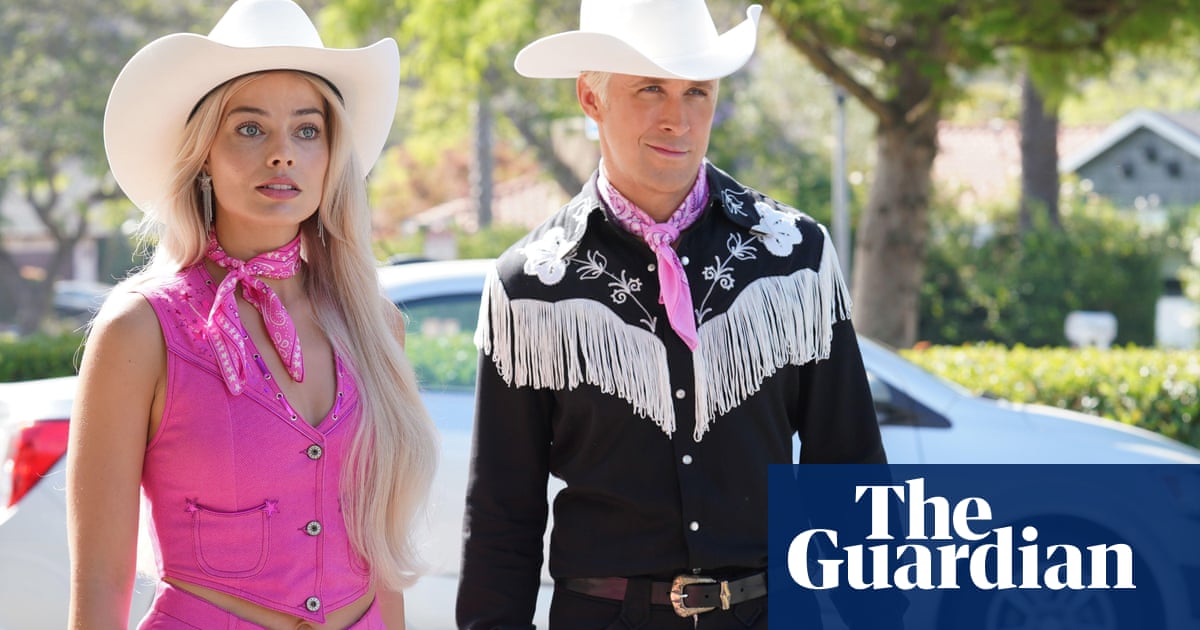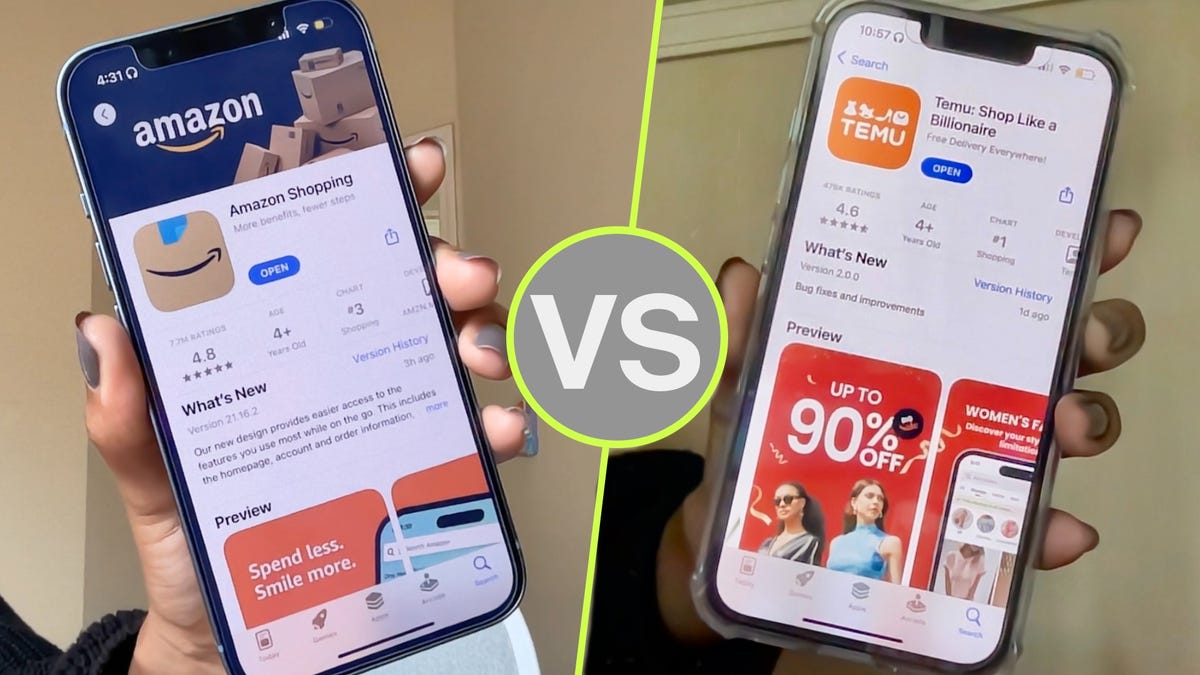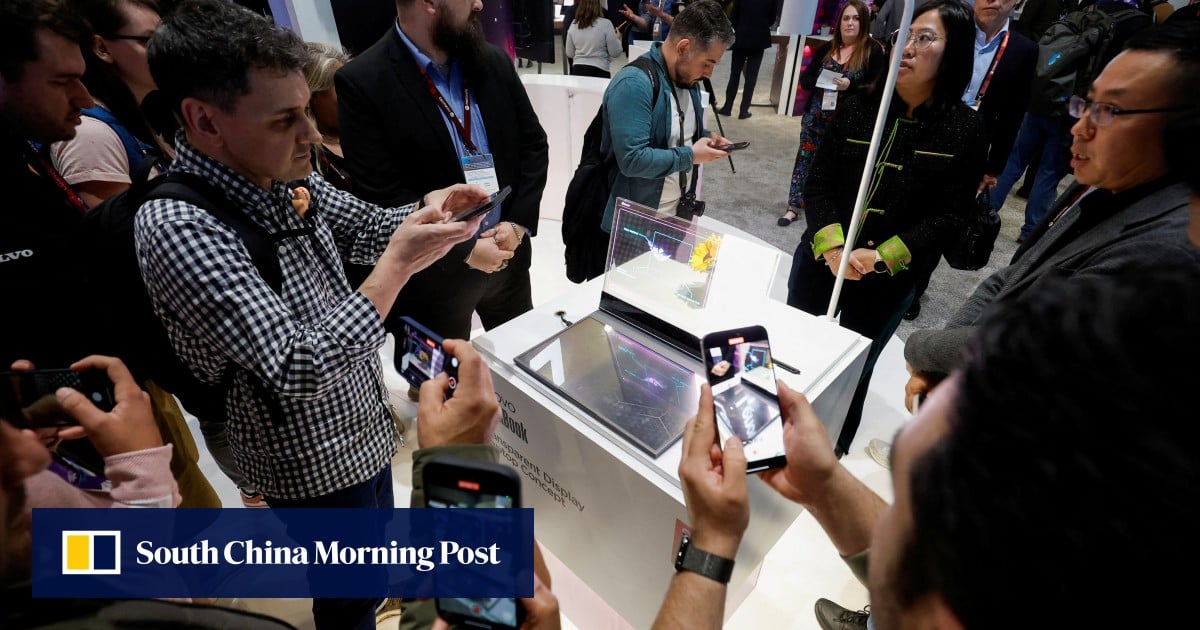When Jacqueline Durran was crafting the costumes for the Barbie film, which whipped the world into a hot-pink frenzy last summer, she first worked out all of Barbie’s outfits – and then she “fitted Ken in”. He is, says the British costume designer perhaps best known for her work on period dramas, “the accessory to what she’s wearing”.
The notion of a clinger-on Ken clearly amused the cast and crew, as much as it tickled the rest of us when the film exploded on to our screens. “Greta had this great image of ‘Kens’,” says Durran, referring to the film’s director Greta Gerwig. “Like what do Kens do when Barbie doesn’t need them? They just stand idling and waiting: they don’t have anywhere to live, they’re just there.” The fact that the film’s main Ken was played by ultimate “internet boyfriend” Ryan Gosling only makes the joke funnier.
In terms of the costumes, this dynamic was expressed by, for example, dressing all the Kens in the same white jumpsuit for a block party while each Barbie got a different, uniquely fabulous outfit. It was, says Durran, the “physical manifestation of that sort of Ken”.
But Ken’s second-fiddle role is not being reflected in the real world. As Durran speaks to me via video from a nondescript room at Shepperton Studios, wearing a normcore navy blue jumper and thick-rimmed glasses while drinking from a mug with a blue tit on it, it is not long since the Oscar nominations were announced. Although Durran is nominated for her work on Barbie, her eighth Oscars nod, Gerwig was omitted from the best director category and Margot Robbie from the lead actress nominations. Gosling, on the other hand, is nominated for best supporting actor for his role as Ken, with America Ferrera gaining her first ever Oscar nomination for her supporting role as a Mattel employee.
Durran is quick to laud what Gerwig achieved – “a movie that was original, extremely popular, that took something that we all know and transformed the way people viewed it into something amazingly different”. She says she doesn’t understand “why that isn’t recognised, with other directors who maybe didn’t make such a splash this year”. In Robbie’s case, Durran thinks that “because she’s so beautiful, people think she looks like a Barbie anyway and just turned up, and that there was no particular skill in doing that”. But she resists the obvious, ironic conclusion, refraining from pinning the omission on the Kens. “I honestly don’t know. I don’t want to say it’s misogyny because I don’t know if it is. I don’t know what the logic is.”
Whatever the Oscars judges think, Barbie was the highest-grossing film of 2023 and painted a neon-pink streak on last summer the likes of which most other films can only dream of. “What I find hard is that if you make an arthouse film, they say, ‘Hollywood’s a business, it’s about making money.’ And if you make a blockbuster they say, ‘Yeah, but it isn’t art.’”
A highly respected costume designer, Durran has worked in both camps. She has frequently collaborated with director Joe Wright and received her first Academy Award nomination for his 2005 film Pride and Prejudice, then won the Oscar for Anna Karenina. Director Mike Leigh is another regular colleague – the pair have been collaborating since the late 90s and Durran is to thank for the costumes in many of his best-loved works, from Peterloo and Mr Turner (for which she received a Bafta nomination) to Vera Drake (for which she won one).
Her IMDb page reads like a module on modern film and TV, with credits including Sam Mendes’ 1917, Richard Ayoade’s surreal 2013 head-scratcher The Double, Kristen Stewart’s take on Lady Di in biopic Spencer, and the 2017 Beauty and the Beast. She worked with Steve McQueen on BBC series Small Axe (for which she received another Bafta) and recently rejoined his ranks for a film project called Blitz. She has dressed several characters, both real and imagined, who warrant being known on a mononymic basis: Churchill, Batman and (Mr) Darcy.
Having grown up in London, Durran studied at the Royal College of Art, before finding her way into costume design via selling vintage clothes at Camden and Portobello Road markets. The knowledge from those days helped her land a role at a costume house called Angels, a West End institution. Costume design was not something she had thought she could do until, one day while watching a soap – she refuses to say which one as “it would be too rude” – she felt galvanised by someone else’s dodgy designs. She explains: when you are watching the “best costumed film of all time, you will never think that you could do that”. Perfection, she says, “looks like an impenetrable shell. You can’t see the mechanics. Whereas with bad things you can.” It gave her what she describes as “a chink of insight into what I maybe could do”.
With vintage expertise and so many British period dramas under her belt, the all-singing, all-dancing, all-day beaching, all-American Barbie could be seen as a departure – and Durran is quick to note that, particularly as she had no particular nostalgia for the toy, she probably wouldn’t have said yes had it not been for Gerwig’s involvement. “For me, Greta Gerwig doing a Barbie film is a thing on its own,” she says. They had worked together before, on Gerwig’s 2019 adaptation of Little Women, for which Durran won her second Oscar.
But even when working on period dramas, Durran’s playfulness with dress – her ability to run with a brief – is what makes her costumes so memorable. A perfect case in point is a particularly luxuriant duck-egg blue frock from Little Women worn by Amy, played by Florence Pugh – a costume that still lingers on the retina, four years on. The New Yorker at the time said she looked “like a cake, like a bisque doll, like a woman gallantly marching toward security”, and compared the dress to the contemporary designs of Alessandro Michele at Gucci. Playing hard and fast with period, it conjured that very modern quality – a vibe.
Another lasting – and lusted after – costume is the emerald green dress that Keira Knightley wore in Atonement in 2007. Backless, with a deep V and an unashamedly anachronistic design, it spawned replicas that have sold for tens of thousands of pounds. Entertainment Weekly even celebrated its 10th anniversary. “Still going strong!” says Durran, smiling.
Cut to the present day and, with Ken, Durran once again demonstrates her ability to go hell for leather on a brief and come up with surprising, zeitgeist-defining looks. When, in the second part of the film, the patriarchy bleeds into Barbieland, Ken’s outfits start to be inspired by “iconic images of masculinity”, including one of Sylvester Stallone in a fur coat. “That one is so fantastic,” Durran says gleefully. “It became my guiding image because I wasn’t really sure how far to go with Ken and I just thought, ‘That is the best thing I’ve ever seen.’”
Not that Durran can take all the credit – “Ryan loves clothes,” she says. “We would do all of these fittings and it would all be great, then he’d go, ‘What about if …?’. Take the Ken underwear, which riffed on the iconic Calvin Klein design: “One of the greatest things in the film for Kens is the Ken pants, and that was Ryan’s idea. He sent me a message asking, ‘Do you think I could have Ken pants?’ Obviously yes.”
So Ken did have some agency – and what Stallone and underwear were to his wardrobe, feminism apparently was to Barbie’s. It was, says Durran, fundamental to the costumes. Unlike other characters she has dressed, Barbie dresses purely with what she is doing in mind. What Barbie isn’t doing, Durran says, is “dressing for another person – she’s not dressing for the male gaze”. That many of her outfits are quote unquote sexy is, she would argue, by-the-by; they are “inadvertently sexy”.
While you may not characterise her looks as practical, per se, she always dresses for the occasion. If she is off to the beach, she will wear beachwear; if she is off to a party, she will wear a jazzy jumpsuit; if she is off to do some social justice, she will wear a boilersuit. When she heads to the real world for the first time, she wears what she thinks the most appropriate thing to wear for arriving in the real world is. It took them ages to come up with what that was, though, discounting jeans and “an all-American Malibu beach girl kind of thing”, before landing on the outlandish “faintly country, faintly western”, very pink outfit that appears in the film. “It was all about asking what is a defining American look, because that’s what Barbie would choose to blend in. And the great thing about Barbie is that what she thinks will blend in actually just makes her stand out.”
It must have been strange to see so much of the real world succumb to Barbiemania – besides the obvious pink takeover, sales of Barbie’s signature hair accessory, the scrunchie, jumped by more than 1,000%, and ponytails crept higher on people’s heads. Since Durran’s first movie gig, designing costumes for Mike Leigh’s All or Nothing in 2002, has there been a change in the impact which the costumes we see on screen has on the clothes we wear in the real world? “I think it has reached new heights [with Barbie] but I do think it has always existed,” she says. “I don’t know enough about, say, 1930s and 40s movie stars, but I feel they always had an influence on fashion. But I think probably the social media makes it faster and more all-pervasive.”
As someone who cut their teeth in secondhand markets, though, Durran must feel conflicted about all the new clothes being bought in the quest to look like on-screen characters. Around the release of Barbie, Durran partnered with resale platform Thredup to offer sustainable alternatives for those hoping to get the Barbie look. One of the big cultural quirks of last summer was the phenomenon of cinemagoers dressed in Barbie-inspired costumes. Durran loved to see it – “the fact that people engaged with it to such a degree”. But, she says, “it’s just awful to go out and buy fast fashion just to be a Barbie for a night.”
We are running out of time but I want to put one last thing to Durran: a comment Steve McQueen made about costume designers being the brightest people on set. She laughs: “I love Steve.” But she won’t be drawn into self-congratulation: “We’re a team. The reason I love working on film is because I’m part of a group and we’re all pulling in the same direction.”



)



